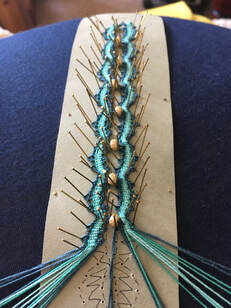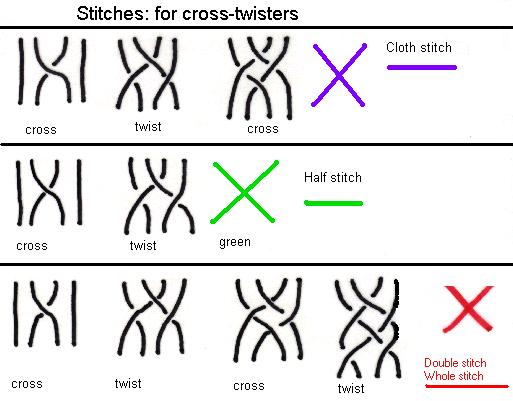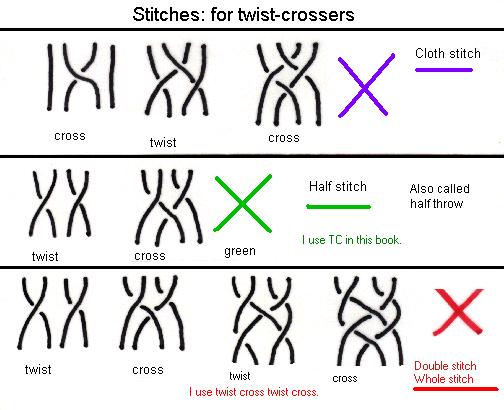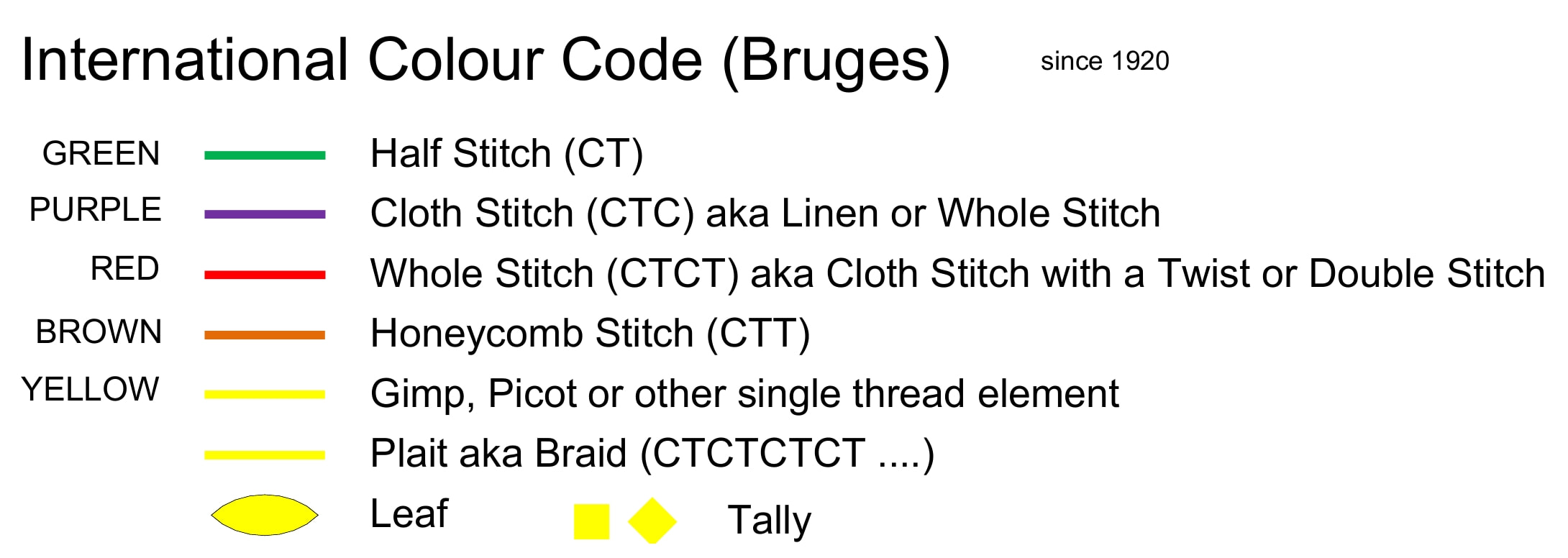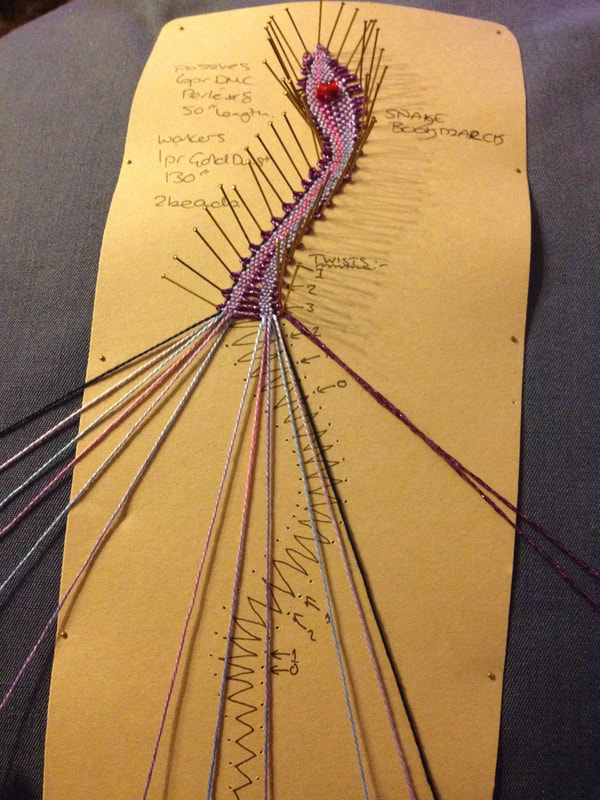So far, so good? Not really, because when I learnt, cloth and whole stitch were interchangable as terms and Cloth Stich & Twist was described as Cloth Stitch & Twist or Whole Stitch and Twist.
Now, there were a number of reasons that the International System didn't take off and the main one was limitations on printing. During the resurgence of lacemaking in the 70s and 80s, colour printing was exceptionally expensive. Most designers would only have a colour cover and maybe one or two colour plates in their books. This wasn't an issue for looking at the lace patterns and finished articles because most, if not all the lace was made in the traditional white or black and the prickings were black dots. Around the mid 90s, dual colour because easier to do so we started to see the addition of blue into the printing of a number of books, most noticably Pamela Nottingham's later books. This was followed by tri colour printing and we started to see red included in Geraldine Stott's and Bridget Cook's later books. With the opening of the EuroTunnel in 1990, it now became easy for lacemakers in the UK to take a train to Belgium and holiday in Bruges, giving access to the Kant Centrum and attend OIDFA events in Europe. Towards the end of the 90s, access to international books was also becoming much easier in the UK due to international lace suppliers attending events like the National Lacemaker's Fair at the NEC and teaching at summer schools. Interest in books from outside the UK grew and UK lace suppliers found it easier to obtain books from publishers such as Barbara Vey. It was around this time that multicoloured printing took off and we started to see the International Colour Code being used more and more in books and people started to realise that terminology isn't global. So, the use of C and T became the international language on many of the newsgroups such as Arachne so that lacemakers could talk to each other and understand what was being discussed.
3 Comments
Tristen
13/6/2021 03:14:21 pm
This will be a very handy reference! Thank you!
Reply
Judy
13/6/2021 03:28:19 pm
That explains it!
Reply
Celia coulson
13/6/2021 06:43:41 pm
Hank you Liz, very informative and useful. Cx
Reply
Leave a Reply. |
From time to time I post on different groups and wanted to collect some of the advice that I give in one places.
Categories
All
Archives
November 2022
|

